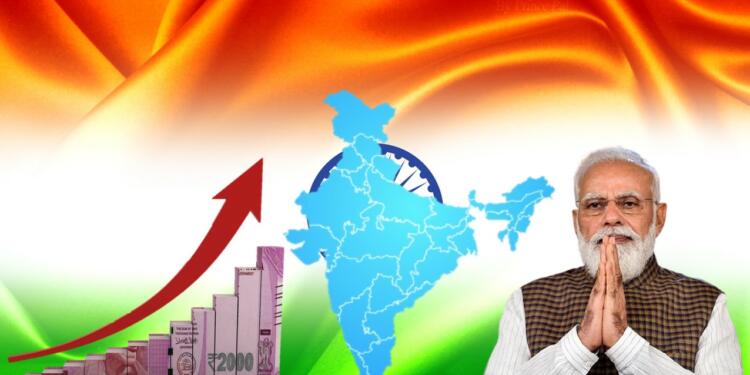- For the third consecutive quarter Indian economy has posted the highest growth rate among the major economies of the world.
- India remains the second largest FDI recipient in the world, fast catching up with China.
- Manufacturing PMI touched 10 months high at 57.6, which means the government’s effort to Make in India and the Production Linked Incentive scheme have started showing positive results.
- Higher growth in imports and a lower jump in exports means while the Indian economy is firing all the cylinders, the demand in foreign countries is weakening due to the new Covid variant induced lockdown.
- The efforts of the Modi government in the last one and a half years to improve the macroeconomic conditions and maximize the opportunity for reform has worked well and is showing results now.
For the third consecutive quarter Indian economy has posted the highest growth rate among the major economies of the world. In the second quarter of the ongoing fiscal year (third quarter of calendar year), the Indian economy grew at 8.4 percent as compared to the same quarter of the last fiscal year. The rise in consumption and agricultural output put the economy on a growth pedestal although the services sector remained muted given the fact people are still avoiding tourism, eating out, etc.
The analysts were not happy with the fact that government consumption (revenue expenditure) is muted but appreciated the fact gross fixed capital formation (a proxy for investment) is strong, and this means the growth is sustainable. Siddhartha Sanyal, Chief Economist and Head of Research, Bandhan Bank, said, “Overall, GDP growth looks set for an 8-9% range in FY22. Several high-frequency indicators have recorded decent uptick in recent months. Nevertheless, indices such as Consumer Confidence are still 25-30% lower than their pre-Covid levels. Despite inflationary concerns in recent months, one expects policymakers to stay broadly growth-supportive, especially given the fresh concerns triggered by the Omicron variant of the coronavirus. The uptick in exports in Q2 was encouraging. However, going ahead this will remain contingent upon global recovery.”
Apart from headline GDP figures, other high-frequency economic indicators like GST, imports, exports, manufacturing PMI, foreign direct investment showed very good results. India remains the second largest FDI recipient in the world, fast catching up with China. The GST collection in the last month was the second-highest (at 1.31 lakh crore rupees) since the implementation of the nationwide indirect tax in 2017.

Manufacturing PMI touched 10 months high at 57.6, which means the government’s effort to Make in India and the Production Linked Incentive scheme have started showing positive results. A 10-month high manufacturing PMI means India is attracting a lot of factories that are exiting China and looking to rejig their supply chain. “The Indian manufacturing industry continued to expand in November, with growth gathering pace and forward-looking indices generally pointing to further improvements in the months to come,” said Pollyanna De Lima, Economics Associate Director, IHS Markit.
The merchandise exports of the country rose by 26.5 percent to 29.88 billion dollars while imports were 53.15 billion dollars, posting huge growth of around 57 percent. Higher growth in imports and a lower jump in exports means while the Indian economy is firing all the cylinders, the demand in foreign countries is weakening due to the new Covid variant induced lockdown.
“India’s merchandise exports in April-November 2021 was $262.46 billion, an increase of 50.71 per cent over $174.15 billion in April-November 2020 and an increase of 24.29 per cent over $211.17 billion in April-November 2019,” the commerce ministry said.
Except for the government consumption, where the lower spending by the states has kept the growth slow, all other segments of the economy are firing at full pace.
The efforts of the Modi government in the last one and a half years to improve the macroeconomic conditions and maximize the opportunity for reform has worked well and is showing results now. “The economic activities, FDI numbers and several other indicators are at all-time highs. These are very positive signs, and show that the Aatmanirbhar Bharat package has helped the nation. This will create a lot of jobs in the future, helping the next generation,” said Syed Zafar Islam, spokesperson of BJP.
The healthy economic growth in the post-pandemic period vindicates the Modi government’s philosophy of Aatmanirbhar Bharat and now the government will stick to the same set of principles (investment-driven export-led growth) for the next few years.































